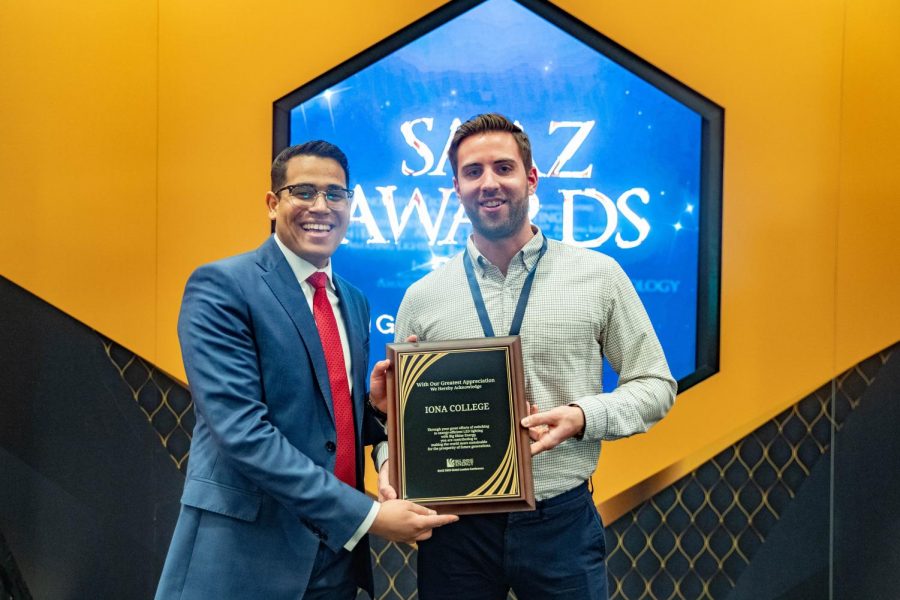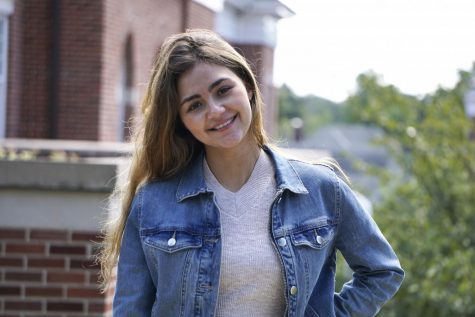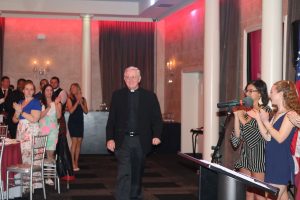Iona strives for sustainability through partnership with Cenergistic
September 23, 2020
In an effort to reduce its carbon footprint, Iona College has been working with Cenergistic, a leading energy conservation firm, to help reduce the consumption of oil, natural gas, water and electricity on campus. With the goal of saving over $2.5 million in energy costs and reducing energy consumption by roughly 20% in the next five years, Iona has made it a priority to practice sustainability and go green.
Thomas VanWert is Cenergistic’s oncampus Energy Specialist at Iona. The Ionian’s Stacey Franciamore interviewed Van Wert to discuss Cenergistic and its role on campus.
This interview was conducted via email and has been edited for space and clarity.
SF: What is Cenergistic and what do they do?
TV: Cenergistic is a behavioral based energy conservation company, backed by technology, which was founded in 1986. By applying our sustainability principles and with the use of our proprietary software, we have helped save nearly 1,500 school districts, universities and municipalities a total of $5.8 billion to date. The five-year partnership began in June 2019 and our mission is to save as much energy and money as possible for our clients while increasing comfort in the buildings. It is a win-win for all, as greenhouse gas emissions are reduced and the money saved can be used to fund other campus initiatives.
SF: What is your role in the Iona College – Cenergistic partnership?
TV: As an Energy Specialist, I am on campus at all different times and days auditing and analyzing every energy use point in order to find ways to reduce consumption. This can be as simple as making sure lights are turned off in an unoccupied building or optimizing a building’s entire mechanical system to increase efficiency. It is not just me who is working to reduce energy as Cenergistic provides a network of resources to do the job. We have consultants available remotely and on-site, such as our boiler and furnace expert who, in a normal year, would make building by building adjustments before heating season begins. GreenX is our multi-purpose software used to look at past, current and future data. The ‘Audit’ feature creates alerts which helps me know where to focus next time I am in the building while ‘Simulate’ forecasts building energy costs and performance through interval data analysis.
SF: By working with Cenergistic, Iona plans to reduce the consumption of oil, natural gas, water and electricity by roughly 20% and save over $2.5 million in energy costs over the next five years. How far along is Iona in this plan and do you have an estimate of how much energy and money has been saved so far?
TV: Through year one, we have saved over $380,000, or 16% cost avoidance, equivalent to 3.3 million miles of automobile travel taken off the road. This number has been increasing month over month and I believe that by this time next year, we can be at 20% overall. Additionally, the average cost per square foot required to power the college’s facilities has decreased from $2.50 to $1.91 today.
SF: Can you emphasize the importance of these sustainability efforts and the bigger picture?
TV: As most are already aware, climate change continues to happen world-wide which is why it is important to mitigate carbon emissions in every way possible. The New York State Department of Environmental Conservation (DEC) recently passed the Climate Leadership and Community Protection Act (CLCPA) with the goal of reducing greenhouse gas emissions 40% by 2030 and 85% by 2050. It will take continued individual energy awareness and broader programs like the Iona-Cenergistic partnership to reach these goals.
SF: How can students and faculty at Iona contribute to this program and Iona’s sustainability efforts?
TV: It is important that the campus community do their part by turning off lights and equipment when it is not in use and submitting work orders for things such as leaks or faulty equipment. When leaving for class for example, getting in the habit of turning off the AC can help save hundreds of dollars annually in just that single room. Just think of the potential savings when that behavioral change is extrapolated campus wide. It is important to follow the program guidelines which can be found on Iona’s website.
SF: How has COVID-19 impacted the program?
TV: This unique period has forced us to manage the buildings like they never have before. During the spring months while most of campus was empty, we were able to reduce energy consumption by over 50%. With students and faculty back, we have put in measures to increase air quality, such as pre and post occupancy building flushes and allowing more outside air into buildings for greater ventilation. While we are still currently saving energy, the focus for now has been on healthier buildings.
SF: What is a specific measure you have taken to reduce energy?
TV: I am always looking out for grants and other energy saving programs. Last year, I received over 60 smartAC kits from a Con Ed rebate program. These connect to window ACs and allow for remote scheduling and temperature setpoint capability. Currently, every classroom in Doorley Hall, and parts of Cornelia, and Murphy have these installed. The Facilities Department has also done their part by installing LED lights campus-wide and upgrading to more efficient boilers to heat Spellman Hall, for example.









